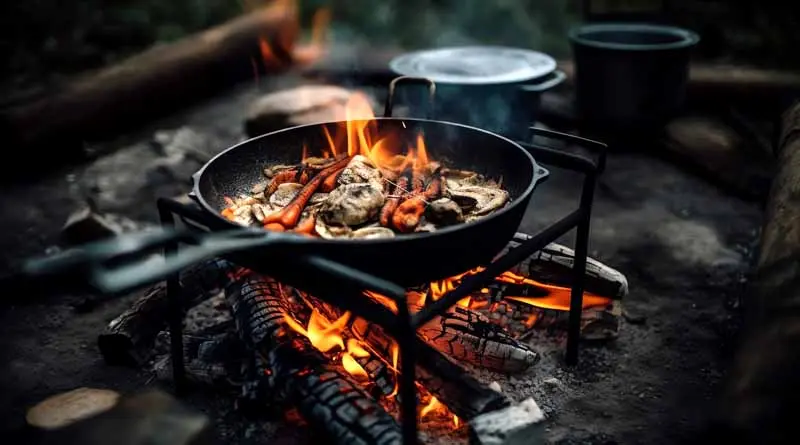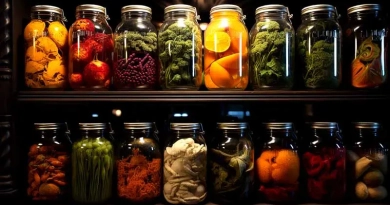
How do I cook food while camping?
A Culinary Journey in the Wild
As the sun dips below the horizon, painting the sky with strokes of fiery orange and deep purple, my campsite comes alive with the familiar clatter and clang of pots and pans. A question as old as camping itself emerges amidst the crackle of the campfire: How do I cook food while camping?
Cooking in the wild is an art that marries the primitive with the modern, a dance of flavor and technique set against the backdrop of nature. The challenge isn’t merely to satisfy hunger but to enhance the outdoor experience.
Camping cuisine encapsulates the essence of outdoor life, blending simplicity with a touch of culinary adventure. Whether you’re unrolling a sleeping bag under the stars or setting up camp near a serene lake, how you choose to cook can enhance or simplify your camping experience. Let’s delve deeper into each cooking method, discussing their benefits and challenges, and explore how a hybrid approach can optimize your culinary experience in the wild.
Detailed Exploration of Camping Cooking Methods
No-Cook Meals
Benefits: No-cook meals are the epitome of convenience. Ideal for hikers and campers who prefer to minimize their load or reduce preparation time, these meals can include items like sandwiches, wraps, cured meats, cheeses, and pre-packaged salads.
Challenges: The main drawback is the lack of hot food, which can be especially missed in colder conditions. Relying solely on no-cook options often leads to meal monotony, as the variety is typically less than that of cooked meals. Over multiple days, this can become less appealing and might not provide the caloric intake required for more strenuous activities.
Portable Camp Stoves
Benefits: Portable stoves offer a balance between convenience and culinary potential. They allow for a variety of cooking styles—from boiling water for coffee to sautéing vegetables or grilling meats. They’re particularly valuable in regions where open fires are prohibited due to regulations or environmental concerns.
Challenges: The primary downsides are the additional weight and space required for the stove and its fuel. There’s also the ongoing cost of fuel canisters, and in remote locations, the availability of fuel can be an issue.
Open Fire Cooking
Benefits: Cooking over an open fire taps into a primal pleasure, offering a satisfaction deeply rooted in human history. The flavor imparted by fire-cooked food is often superior to that cooked on a stove. It also provides a focal point for social interactions in the evening.
Challenges: The skill required to effectively manage an open fire should not be underestimated. Unlike a stove, where heat can be controlled easily, open fire cooking requires adjusting the amount of wood, the distribution of coals, and the proximity of food to the flame. Additionally, many camping areas restrict or forbid open fires, especially during dry seasons, to prevent wildfires.
Best Solution and Implementation: Hybrid Approach
After years of field tests and campsite meals, I’ve honed a hybrid cooking strategy that leverages the strengths of various methods while mitigating their weaknesses.
Flexible Cooking Gear
Implementation: Choose a lightweight, dual-fuel portable stove that is compact yet powerful enough to handle tasks that open fires typically manage. Ensure that your cookware is versatile; cast iron skillets, for instance, can be used on both a stove and an open fire, providing durability and excellent heat distribution.
Ingredient Planning
Implementation: Select ingredients that are not only light and easy to carry but also versatile. Staples such as pasta, rice, and canned proteins (like chicken or beans) can be mixed and matched to create different meals, ensuring variety. Utilize spices packed in small, sealed containers to transform simple dishes into gourmet experiences without much effort.
Preparation Before the Trip
Implementation: Prepare and freeze meals like stews, chili, or pasta sauces at home. These can be easily reheated on a stove or over a fire, saving both fuel and preparation time. This approach not only makes mealtime quicker but also ensures you have hearty, satisfying meals ready after a long day of hiking or exploring.
This hybrid approach to cooking while camping offers flexibility, efficiency, and the pleasure of well-cooked meals, enhancing your connection to the natural world and making your outdoor adventures both enjoyable and memorable.
Listing Resources or Tools Needed
To cook effectively while camping, you’ll need:
- Portable Camp Stove: Choose a model that fits your budget and backpack space.
- Cookware: A durable pot and pan, preferably cast iron or lightweight non-stick material.
- Utensils: A multi-purpose tool like a spork, a sharp knife, and a compact cutting board.
- Fuel: Ensure you have adequate fuel for your stove, considering the length of your trip.
- Fire Starting Materials: waterproof matches, lighters, and fire starters.
- Cooler or Insulated Bag: For keeping perishables fresh, especially on longer trips.
Conclusion
As the last light fades and the first stars twinkle, the aroma of a well-cooked meal fills the campsite, reminding me why this effort is worthwhile. Cooking while camping isn’t just about nourishment; it’s a ritual that roots us in the here and now, connecting us to the ancient tradition of fire, food, and camaraderie. With the right tools, a bit of preparation, and a dash of creativity, you can turn each meal into a memorable part of your outdoor adventure.






